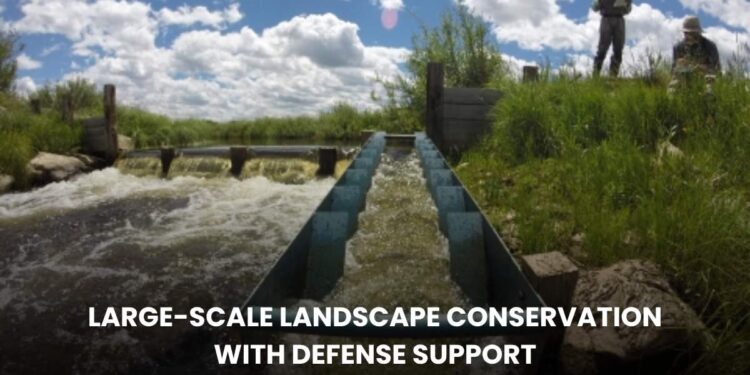At the present time, land use, environmental protection, and national security are deeply intertwined with each other. Keeping this relationship in mind, the US DoD has started an initiative, which is known as Large-Scale Landscape Conservation with Defense Support.
Its aim is not only to protect natural resources but also to ensure defense preparedness, agricultural land sustainability, and environmental resilience, which is operated jointly by the Department of Defense, Department of Agriculture, and Department of the Interior.
Launched in 2013, the Sentinel Landscapes Partnership also identifies areas where the goals of military training, agricultural land, and ecological conservation can be achieved simultaneously. It is still called the Triple Win Strategy, so by reading it completely, you can know everything about it.
What is Large-Scale Landscape Conservation with Defense Support?
It is a cooperative land management model where the Department of Defense, the Department of Agriculture, environmental agencies, and private landowners work together to develop coordinated conservation and land use programs for large geographic areas.
Its objective is to avoid inappropriate land use in defense training and testing areas, ensure long-term conservation of agriculture, forestry, and natural habitats, enhance resilience to the effects of climate change, and provide technical and financial support to local communities and farmers.
Its main features are that there is no land acquisition due to voluntary participation, the incentive-based scheme provides economic benefits to farmers and private owners, and the partnership-based model allows federal, state, and local agencies to work together.
Why was this model needed?
Rapid urbanization around many military bases in the United States meant that residential areas, roads, and industrial construction began to approach the base, increasing noise, light pollution, and safety risks in military training.
According to the DoF, more than 80% of military bases were facing encroachment risks. To address this, this program was started to maintain ‘Buffer Zones’ around military bases, ensure local land use is consistent with defense interests, and maintain environmental and economic balance.
Till now more than 17 Sentinel Landscapes have been declared in the United States, such as Camp Ripley (Minnesota), Fort Huachuca (Arizona), Eastern North Carolina Sentinel Landscape, etc.
What are the benefits of this initiative?
Implementation of this initiative has brought not only defense benefits but also environmental, economic, and social benefits. We have discussed this below.
- Noise buffer zones have been created around training sites, reducing obstructions to flight paths and firing ranges and maintaining long-term operational stability.
- Forests and water resources are being protected in large areas, wildlife habitat corridors are protected, and the ability to combat climate change is also increased.
- Farmers and landowners voluntarily engage in conservation efforts, receive financial assistance and tax incentives through government programs, and provide employment, tourism, and resource management opportunities to rural communities.
How does this initiative work?
It identifies areas where military, agricultural, and environmental interests intersect. It involves partnerships between federal departments, state governments, local authorities, landowners, farmers, and environmental organizations.
Basically all the partners together create a landscape management plan, which contains complete details of land use, conservation strategy, and financial support. Funding is provided through the DoD’s REPI Program, as well as technical and financial assistance from USDA conservation programs.
What are the challenges and future direction?
The implementation of the program faces some challenges, such as maintaining strategic coordination between various departments, the need for long-term financial support, maintaining a balance while respecting land ownership and local rights, and developing a strategy to address increasing climate uncertainty.
The Department of Defense aims to have Sentinel Landscapes cover more than 2 million acres by 2030, and the DOD is now working to integrate this model with climate resilience planning and disaster risk reduction.










